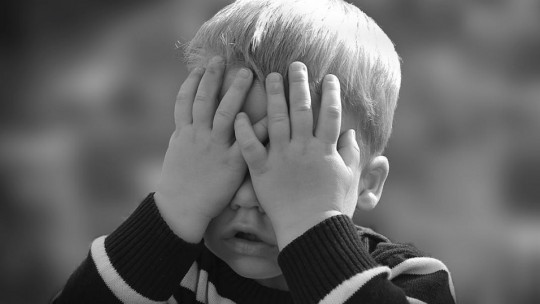Autism Spectrum Disorders (ASD) are neurodevelopmental disorders characterized by communication and social difficulties, as well as restricted interest patterns. Here We will talk about the main theories about autism that try to explain its origin
Theories about autism
Although the origin of autism is currently considered unknown, a multitude of theories, both psychological and biological, have been developed to explain it. Some are more supported than others. Let’s get to know them.
1. Psychological theories
Within these theories we find the following:
1.1. Theory of mind
One of the theories about autism is the one that relates autism to the theory of mind (ToM), formulated by Simon Baron-Cohen. These types of theories have been increasingly investigated.
Theory of mind refers to the “ability that human beings have to understand and predict other people’s behavior, their knowledge, their intentions and their beliefs.”
The concept of ToM was introduced by Premack and Woodruf (1978), who carried out experiments with chimpanzees with the aim of knowing their ability to understand in relation to the human mind.
1.2. Neuropsychological theory
This theory speaks of an alteration of Executive Function in people with autism.
Fisher and Happé (2005) suggest that the failures of autism They originate mainly from alterations of the frontal lobe The frontal lobe is responsible for functions such as memory and the regulation of environmental stimuli, both visual and auditory. It is also involved in emotional regulation, impulse control and social behavior.
Besides, frontal alterations are related to executive functions , that is, the set of processes responsible for generating, monitoring and controlling action and thought. In addition, they include aspects of planning and executing complex behaviors, working memory, and inhibitory control.
When these functions have been evaluated in the population with autism, the results have suggested global failures in executive function and particular aspects proposed as causing ASD.
Global alterations in executive functioning have been observed in a high number of perseverations and failures to find effective strategies to achieve the goal ; for example, in the Wisconsin Card Sorting Test.
In relation to these findings, a possible prefrontal alteration together with subcortical dysfunctions has been proposed as the cause of the typical symptoms of ASD in the social and cognitive areas.
1.3. Central Coherence Weakening Theory
Another theory about autism is the theory was proposed by Uta Frith in 2003, who proposes that autism is characterized by a specific deficit in the integration of information at different levels
According to this theory, children with autism have difficulties efficiently making comparisons, judgments and conceptual inferences.
1.4. Hobson’s affective-social theory
Hobson’s theory (1995) states that cognitive and social deficits in autism are affective-social in nature. Hobson defends the role of emotion in the development of interpersonal relationships as a primary deficit in people with autism It suggests that people with autism have greater difficulty understanding emotion, and that this negatively affects their social interactions.
Hobson studied the spontaneous language of autistic people to understand their first verbalizations about mental states, and found specific deficiencies in your ability to talk about states such as thinking, knowing, and believing
In short, Hobson proposes rescuing the importance of the interpersonal-affective disorders that are at the base of the problem of autism.
1.5. Baron-Cohen theory of mental blindness
According to this theory, closely related to the theory of mind, people affected by an autism spectrum disorder do not understand the intentions of others and experience anxiety when certain behaviors seem unpredictable since they are incapable of anticipating events.
Baron-Cohen proposes a delay in the development of theory of mind, producing varying degrees of “mental blindness.”
This theory would explain the social and communication difficulties of people who are not neurotypical and by extension who are autistic. This limitation also occurs in another series of pathologies such as schizophrenia, borderline personality disorder, narcissistic behaviors and people in a psychotic phase.
1.6. Extreme Male Brain Theory (Baron-Cohen)
This author proposes an excess of testosterone during pregnancy that ends up causing an excessively masculinized brain (good for systematizing and bad for empathizing). It has never been proven.
2. Biological theories
On the other hand, within biological theories we find the following theories about autism:
2.1. Anatomical theories
Some authors have found right hemisphere lesions in autistic children , and have related it to alterations in speech functions and impairments in non-verbal language. All of this makes it difficult to understand different attitudes in others (for example, understanding sarcasm, irony or double meanings), as well as empathy and being able to infer and attribute aspects of others.
Thus, the right hemisphere has important implications for understanding perception, the emotional aspect, non-verbal language, face recognition and emotions. Structural alterations have also been found in the amygdala and temporal lobe and anterior cingulate cortex.
Specifically, the amygdala has been linked to emotion regulation , especially the feelings of anger and fear and the physiological reaction that these emotions produce. For its part, the anterior cingulate enables people with the “ability to establish solutions to a novel problem by making predictions of the consequences.”
2.2. Other biological theories
In addition to the anatomical theories mentioned, we find: genetic hypotheses (Fragile pre/peri/post natal and finally the hypothesis of hyperserotoninemia (excess serotonin in the cerebrospinal fluid).









